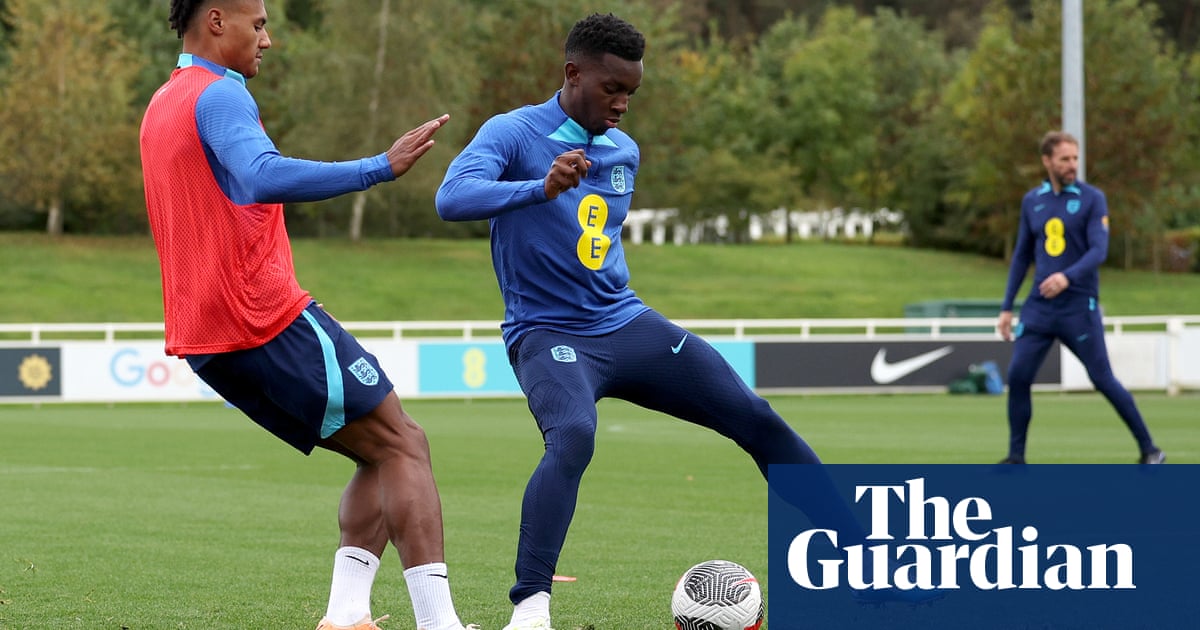
s England’s cricketers make their first tentative steps towards the nets after eight weeks at home, the fitness coach who has been chivvying them along remotely believes some may return in the best shape of their career.
When the Test tour to Sri Lanka was abandoned in March and the squad flew home to find Boris Johnson locking down the country, the director of England cricket, Ashley Giles, tasked his strength and conditioning lead, Rob Ahmun, with keeping the troops active and stated publicly there would be “no excuses” for a drop in standards.
Ahmun rallied quickly before colleagues in the performance department, including his fellow strength and conditioning coach Phil Scott, began to get furloughed. They sent kettlebells, resistance bands and medicine balls (for the bowlers) to the 21 centrally contracted men’s cricketers, as well as drawing up personalised plans based on playing roles, injury history and lifestyle.
The players have been filling out a weekly form online that details the times and intensity of their sessions, while there have been weekly one‑on-one catch-ups with Ahmun via video call. There has been an element of trust involved but the coach expects the original goal set by Giles to be achieved.
“The guys have maintained a really good level of fitness during this lockdown period, without a shadow of the doubt,” says Ahmun. “When I first joined Glamorgan [in 2003] I had two players turn up to the first gym session I organised. But the training culture in English cricket has changed.
“In the national team we have guys like Ben Stokes and Jos Buttler who are at the forefront, and the professionalism is so far from where it was that the bullshit detector isn’t really needed any more. It’s about guiding them and shaping their weeks to suit them. In the past you needed to be a sergeant major, shouting to get 10 more press-ups out of them. Now it’s mentoring.
“The schedule sees them bounce from one series to the next, so they’re only maintaining their levels. But to have had an eight-week block like this, even with the restrictions on time outdoors, I don’t doubt that some will return in the best shape of their life.”
Ahmun’s confidence here, as England move to a phase of individual net sessions this week at the start of the road towards some possible “bio-secure” international cricket this summer, is tempered. This has still been an extended break from the sport’s idiosyncratic physical demands, not least when it comes to the 11 seam bowlers on the books and what could be a breakneck fixture list.
Ahmun says: “The one thing we can’t get fooled by is that, just because they look in good shape, they can’t go all-out straight away. They still need to build up the sport‑related elements. They’ve missed out on high-intensity cricket skills – the top end of the pyramid as we see it.
“We need as long as possible to get the fast bowlers right to build up their chronic workloads. They may be running fit but we can’t throw them in to bowl 40 overs in four days or it will break them. I wouldn’t say it is a worry but they are the biggest concern in terms of getting the planning right. It’s unrealistic to expect anyone to play six Tests in a short time and so there will have to be rotation.”
How, given the obvious differences in role, does Joe Root’s running regime differ from, say, Jimmy Anderson’s? A number of the former’s drills have been based on the acceleration, deceleration and coordination required when running between the wickets; the latter’s work has rotated between sprints, the cruising speed of a typical run-up and then longer stretches to add robustness.
“Bowlers need to get weight through the legs as if they were delivering the ball,” Ahmun adds. “So we’ve developed what we call ‘bowl-non-bowl’ sessions. They do double their run-up and smash some medicine balls at the end, plus lots of vertical jumps. It doesn’t look like fast bowling but, broken down, it’s the same neuromuscular components.”
This home training has meant plans needing to be adapted by way of space available. A player such as the opener Rory Burns, say, lives in a flat (and has been rehabbing after tearing ankle ligaments playing football in January), while others may have had larger gardens and more outdoor options.
Meal plans drawn up by the nutritionist Emma Gardner have become interlinked with the regimes and are similarly bespoke, not least with three cricketers – Moeen Ali, Adil Rashid and Saqib Mahmood – observing Ramadan.
Mahmood is one of three quicks on a development contract and, though a rookie at only 23, he impressed Ahmun when lockdown was imposed by immediately buying a home gym, out of his own pocket, for his garage.
Ahmun says: “Those three guys are fasting so we’ve tailored their plans accordingly. They can’t do a session at, say, 2pm because they won’t have eaten for hours and won’t do again for hours either. So they train late at night.
“When the sun goes down they eat, train an hour after that first meal – either a sprint or weights session – then they might do something first thing in the morning after eating, but more like low‑intensity cardio work.”
A competitive edge has been maintained among the squad via Zoom calls, WhatsApp groups and social media. As well as time trials, online Peloton bike races, press-up challenges – and even a half marathon in the case of the relentless Stokes – the squad have had cooking competitions; Sam Curran, it transpires, produced the best-looking protein pancake of the 12 entries.
But none of this compares to the feeling of leather on willow and in the coming days the itch will begin to be scratched as the players head back to the nets at their nearest county grounds, hopeful that an international season can somehow be salvaged, starting with three pencilled-in Tests against West Indies in July.
“We can’t go charging off – there’s still a pandemic out there so we need to respect the social distancing rules and be sensible. But the last eight weeks have prepped the guys well, I think,” says Ahmun. “Now we move into a new period where they can hopefully realise the gains they have made.”
It is 20 years since the advent of central contracts and, despite the recent restrictions on outdoor exercise, all of the provisions that come with them, as outlined above, demonstrate the point made by Giles at the outset: when it comes to fitness, there really are no excuses any more.












